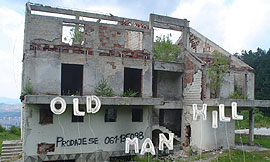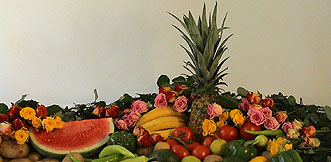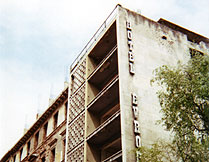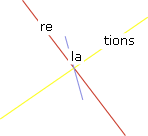|
|



FormatsArtist interventions/interactions in public space in Berlin, discussion forumProject leadership/ curatorKathrin Becker, Neuer Berliner KunstvereinTeamMaryam Mameghanian-PrenzlowArtistsMaria Thereza Alves, Edgar Arceneaux, Danica Dakić, Šejla Kamerić, Stih & SchnockConzept NBK displaced (opening event)id3d-berlin themengestaltung |
Having spent a period of time in Sarajevo, six international artists then develop projects for public space in Berlin. The background to this idea is a project in Bosnia- Herzegovina, "De/construction of Monument"; it aims to use the example of the debate on monuments in order to create a counterbalance to the "rule of ethnic nations" - with its far-reaching consequences for society, culture, religion and mass media -, which has become noticeable in the successor states to the Socialist Federal Republic of Yugoslavia. The works developed for "displaced" emerged from a realisation that the themes of "De/construction of Monument" are symptoms of social processes. The artists seek an equivalent to the function of public memory and public amnesia, relating this to the German capital and the western media principles of an "economy of attention" in diverse ways. The title was chosen as a consequence of numerous stays in Bosnia-Herzegovina on the part of the project's curator, Kathrin Becker (NBK); it views the country as a "displaced nation" in the sense of one that is being excluded from Europe. It is a matter of being forcibly excluded, of being pushed to one side. In a reaction to what is happening in Sarajevo, we are to be made re-aware of events - also because remembering, within the media society, is governed by the day. Artistic interventions / interactionsMaria Thereza Alves and Danica Dakić work with poetic metaphors: Dakić uses the human voice, while Alves employs plants to examine the constant permeation of history, economics and identities. Šejla Kamerić operates with public strategies, with aspects of the omnipresent threat which plays a growing part, not only in Bosnia-Herzegovina, but here too - at least since the 11th September or Madrid and London. Edgar Arceneaux makes further reference to his own family history and sets the name of his grandfather, Old Man Hill, in an associative context together with the topography of Sarajevo. Renata Stih & Frieder Schnock focus on life in Bosnia- Herzegovina in a state of emergency, producing a several-day column in a Berlin daily newspaper. A fleeting element is common to all these works. This fleeting quality diametrically opposes the powerful presence and capacity for ideological exploitation displayed by monuments.Kathrin Becker |
